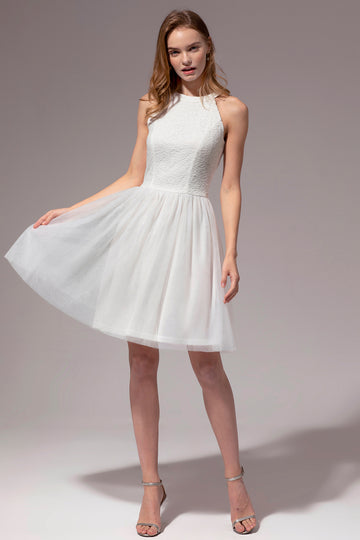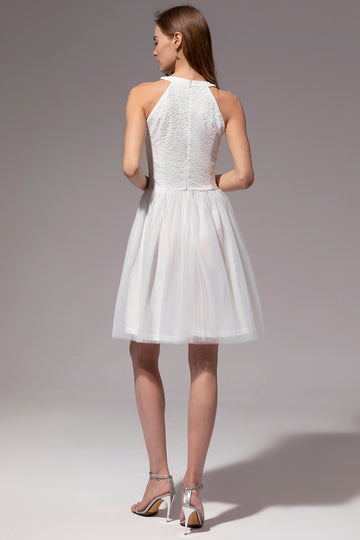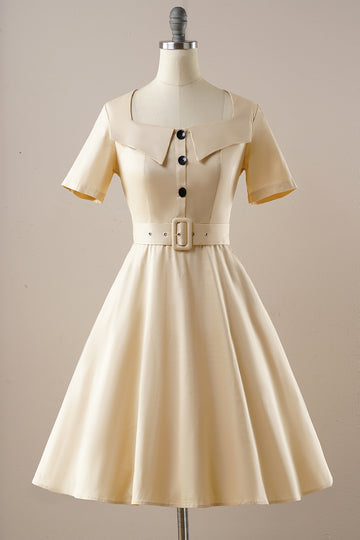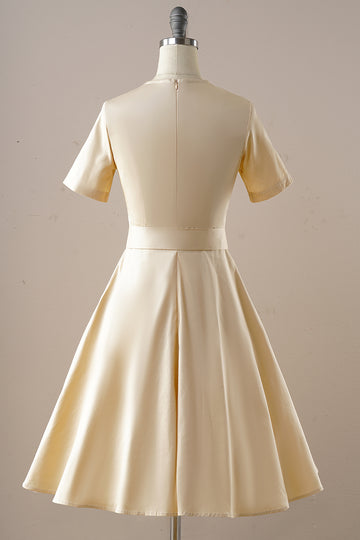Each Woman Needs A Little Black Dress
The Definition of Little Black Dress
From Wikipedia, we can know that: A little black dress (LBD) is a black evening or cocktail dress, cut simply and often quite short. Fashion historians ascribe the origins of the little black dress to the 1920s designs of Coco Chanel and Jean Patou intended to be long-lasting, versatile, affordable, accessible to the widest market possible and in a neutral colour.
As Ann Demeulemeester said, "Black is poetic. How do you imagine a poet? In a bright yellow jacket? Probably not." In the early 19th century, those angst-ridden beatnik philosophers such as Byron, Shelley, and Keats, made black stylishly avant-garde. Not only did black express the collective grief and devastation of the war, it had utilitarian purposes as well. LBD adopted this color and transformed the gorgeous costume design to a simple one. It embodied the rebellious spirit that are daring to show oneself.
This creation had brought about a major revolution in the history of modern fashion. Since one century, LBD has become the ultimate synonym of "fashion charm", and it is also a must-have dress in the wardrobe of a modern woman with trendy touch.
The History of Little Black Dress
A hundred years ago, the little black dress was not as easy to get as it is now, and it was pushed to the peak by a group of celebrities. Let's take a look at its history.
For the first time, LBD appeared in the form of fashion clothing is in the painting "Madame X" by American artist John Singer Sargent in 1884. However, this dress resulted in a strong controversy at that time. Because in Europe and the United States in the 19th century, black was a mourning color, wearing a black dress was to show the bereavement, the majority of the population only wore at the funeral.
The one who really brings LBD to the fashion world is Coco Chanel. In 1926, the US version of "VOGUE" first showed a design manuscript of a little black dress, and named it "Chanel's Ford", to praise the dress with a classic and simple design, and it was very functional, like the famous car Model T of Ford.

In 1947, the first women's collection designed by Christian Dior was released. The black maxi dresses highlighted the female figure curve, with a large skirt, the whole appearance was elegant and feminine. This design was described as “New look” by the editor of Harper’s BAZAAR. Dior's design took LBD to a new era.

In 1954, the fashion designer Edith Head designed a little black dress for the film "Sabrina", which was starred by Audrey Hepburn. The dress was tightly tailored top and the contoured skirt, in line with Dior's design philosophy. In 1955, a jazz singer and actor Rosemary Clooney performed in a little black dress of the shape of a mermaid, brining a big hit. In the poster of the movie "Bus Stop" in 1956, Marilyn Monroe wore a LBD with lace top, and the classic shape lasted for a long time.
From 1957, LBD was popular in Europe and America, and it had become a daily dress that Paris girls can't lack. It’s accurate that the LBD is a statement piece accessible to women of all socioeconomic backgrounds.
Celebrities in Little Black Dress
Givenchy created various suits and dresses for Audrey Hepburn, among which one of the most notable creations was the black sheath dress in the opening scene from “Breakfast at Tiffany’s.” Because of the timeless classic design, Givenchy is often credited as the creator of the LBD. In addition to Hepburn, prominent figures including Elizabeth Taylor, Princess Grace of Monaco and Jacqueline Kennedy also called Givenchy a favorite.

How to Wear a Little Black Dress
The design concept of the little black dress contains practicality, so a classic LBD can move you seamlessly from the office to a party — all with the addition or removal of the right accessories. Wearing a LBD perfectly can make you stand out.
First, pick the right dress for the right occasion. If you want to choose a daywear for parties, lunches, and picnics, we suggest: Wear a fitted black swing dress with a simple design and the length should drop just below the knee. This is suitable for the office as well. If you are looking for a evening wear for dates and special events, we suggest: This dress should be slinkier and still remain well-shaped. A ruched black dress made of lace will be a great choice. If you are a student and considering what to wear for the Homecoming dance, don’t miss a LBD. Wearing a little black dress with a unique design, tailored and well-made, you will be the most eye-catching in the dance floor.
Black is the most classic color and the easiest to dress up, it is hard to go wrong. However, black doesn't suit everyone. For example, if your skin is darker, be sure to keep the dress as far from your face as possible. That way, it cannot bring bad influence to you and you can still benefit from the elegance, simplicity.
Third, reasonbaly choose accessories to match the little black dress. There are some tips as follows:
Add pantyhose. Pantyhose can even out your skin tone on your legs and provide the finishing touch to the look. For a evening wear, sheer black pantyhose is an excellent choice.
Choose the right shoes. Dressing up the LBD with shoes is a significant part of the look because the shoes can provide contrast to the dress. Dress and shoes make up the overall effect, and people's eyes will be drawn to them.
Use accessories to brighten up the dress. LBD can provide a magnificent backdrop for showing off your favorite jewelry pieces, including a necklace that fits the neckline style of the dress, a brooch pinned in a cute spot, or a pair of unique earrings.
Selecting a suitable bag is an improtant part of dressing up, so make sure the bag is treated as part of the overall fashion look. The bag doesn't have to match the shoes or other accessories but it should blend well with the whole color scheme.

Conclusion
Whether long or short, one shoulder or more intricate in detail, the LBD is one thing that never goes out of style. It’s a classic wardrobe staple that grew out of necessity—it just also happens to look fabulous.
From casual wear to office wear and evening wear, LBD is a versatile piece that you can style in numerous ways. Today, whether you wear a little black dress because you choose fit over fuss, or because black will always be the new black, it remains effortlessly elegant. It can be said that each woman needs a little black dress.



















































